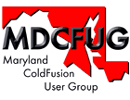 |
 |
 |
|
|||||||||||||||||
 |
|
|||||||||||||||||||
|
 Speakers
Speakers
Charlie Arehart Jo Belyea-Doerrman Tim Buntel Raymond Camden Christian Cantrell Sandra Clark Joey Coleman Sean Corfield Robert Diamond Michael Dinowitz Steve Drucker David Epler Joseph Flanigan April Fleming Ben Forta Shlomy Gantz Mark Gorkin John Hamman Hal Helms Simon Horwith Larry Hull Jeff Houser Chafic Kazoun Matt Liotta Tom Muck Rey Muradaz Nate Nelson Samuel Neff Jeff Peters Bogdan Ripa Neil Ross Margarita Rozenfeld Stephen Shapiro Michael Smith Geoff Snowman Jeff Tapper Dave Watts
|
|
||||||||||||||||||
|
|
| 1 | 2 | 3 | 4 | 5 | 6 | 7 | 8 | 9 | 10 | 11 | 12 | 13 | 14 | 15 | 16 | 17 | 18 | 19 | 20 | 21 | 22 | 23 | 24 | 25 | 26 | 27 | 28 | 29 | 30 | 31 | 32 | 33 | 34 | 35 | 36 | 37 | 38 | 39 | 40 | 41 | 42 | 43 | 44 | 45
Back To Interview list Today we are talking with Accessiblity expert and book author Sandra Clark about her upcoming CFUN-04 presentation. Michael Smith: Sandra I noticed that you are also talking on "Creating Accessible Web Forms" in the CFUN accessibility track. What is accessibility about and why should forms be accessible? Sandra Clark: Accessibility is about creating websites that are available to use by all people. While this is commonly thought of as making web sites available to those who are blind, it also includes techniques that encompass those who can't hear, or can't use a mouse. Believe it or not accessible web sites are also easier to use for those who are using the web via alternative user agents such as mobile phones or cars too! Forms are the way that our users interact with our web pages. If a user can't access your form to purchase something, chances are you lost the sale. By applying simple techniques from the ground up, we can create web forms that anyone can use regardless. MS: But aren't most existing forms on the web already accessible? SC: Actually Forms are probably the MOST INACCESSIBLE elements on the web. That's the major reason I chose this as my topic. As programmers, we interact with our users via the information they enter in our forms. It's important that we know how to make forms available to everyone. MS: Wow! I wouldn't have thought that a form could be inaccessible. What are common ways that forms are hard for the disabled to read? SC: Some of the more common ways I have found are: not explicitly associating a caption with the form element; not grouping related form elements together. Error handling on the client side is another major problem. Using tables to layout forms can also cause headaches. There's a host of problems. Of course if you want to learn about all the problems and how to get around them, then you really should attend my talk Michael. MS: I will see if I can fit it into my busy CFUN schedule! But I have one other concern - if I make my forms accessible won't they be ugly for my regular users? SC: Actually using CSS to style a form makes them much more visually appealing. We tend to create forms that follow the constraints of a form on a piece of paper. Stuff as much stuff in as possible. Using CSS to style related groups and elements makes a form much easier to visually navigate for a sighted person as well. Also using CSS, I can substitute an entirely new style sheet when a user sends my form to a printer, getting rid of the boxes and providing underlines for filling in a form instead. All without changing my form at all. How's that for power! MS: Just how many users are disabled anyway? Is it a lot? SC: According to studies approximately 15-30% of the general population has some sort of functional disability that makes it difficult to use the web. With a population in the United States of about 300 million, that is 45 to 90 million people. Out of those people, only 38% actually use the web, the rest say its just too difficult. That's a lot of people to disenfranchise. MS: I know you wrote about accessiblity in your CFDJ articles last year - should we read those before coming to this talk? SC: Its not a requirement. The only requirement for this talk is that you have a working knowledge of HTML. Of course if you want to read the series (its 4 parts), I won't complain! The series talks about why we should all make sites Accessible, what Accessibility means, why using Web Standards makes Accessibility easier and using Fusebox 4's contentvariables to make it easy. But really, all that anyone needs to come to this talk is an open mind and a willingness to learn! MS: Wow - this sounds like an important topic then. Thanks for speaking with me. SC: Thanks Michael, see you at CFUN! |
 |
|
|||||||||||||||||
| Home | Topics | Speakers | Directions | Spread the Word | Register |
© Copyright TeraTech Inc 2003
405 East Gude Drive Ste 207 Rockville MD 20850
301.424.3903 Fax 301.762.8185 www.teratech.com
Please send comments/questions to [email protected]
For sponsorships or registration, please send comments/questions to liz-cfun04 (at) teratech.com


































